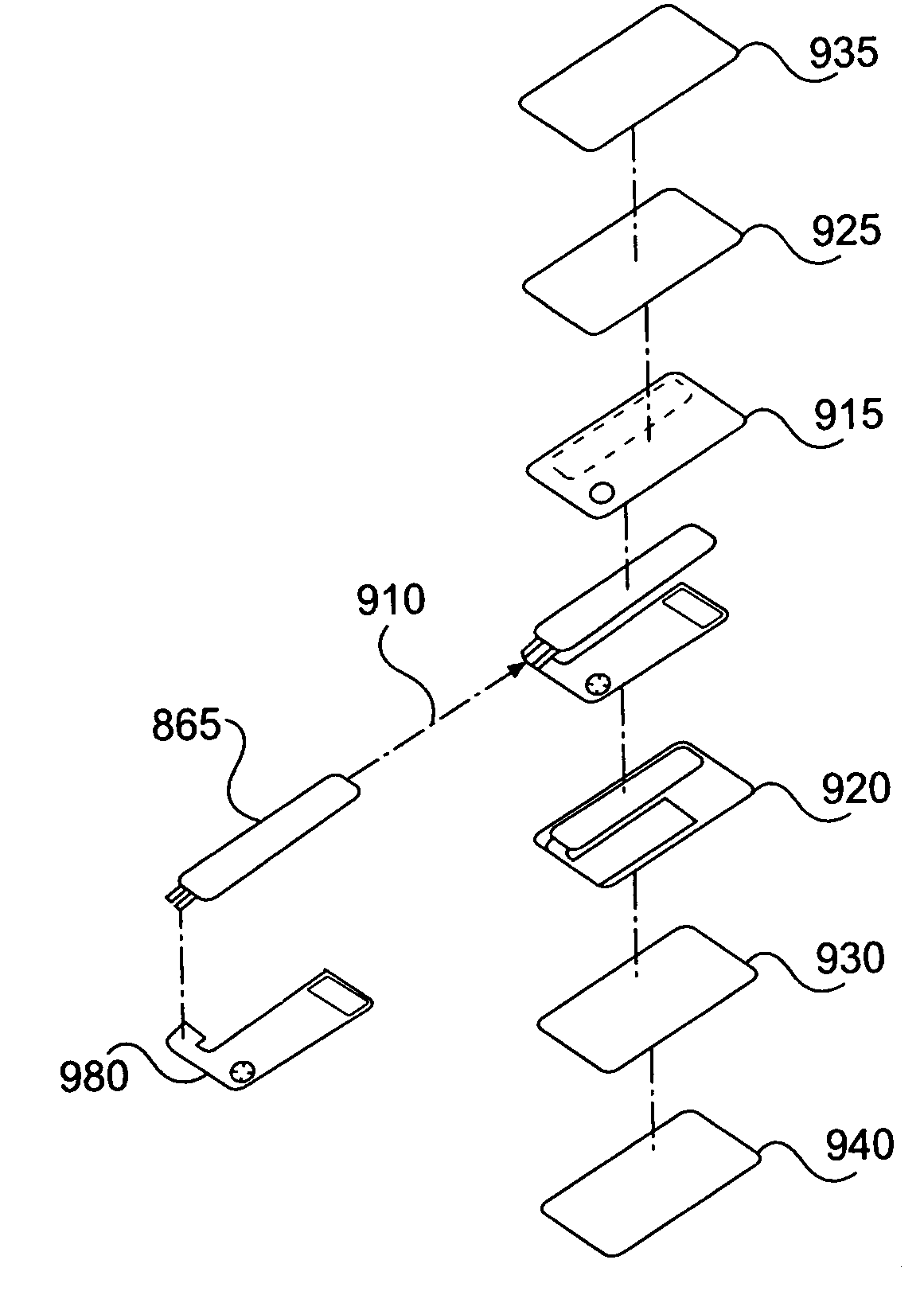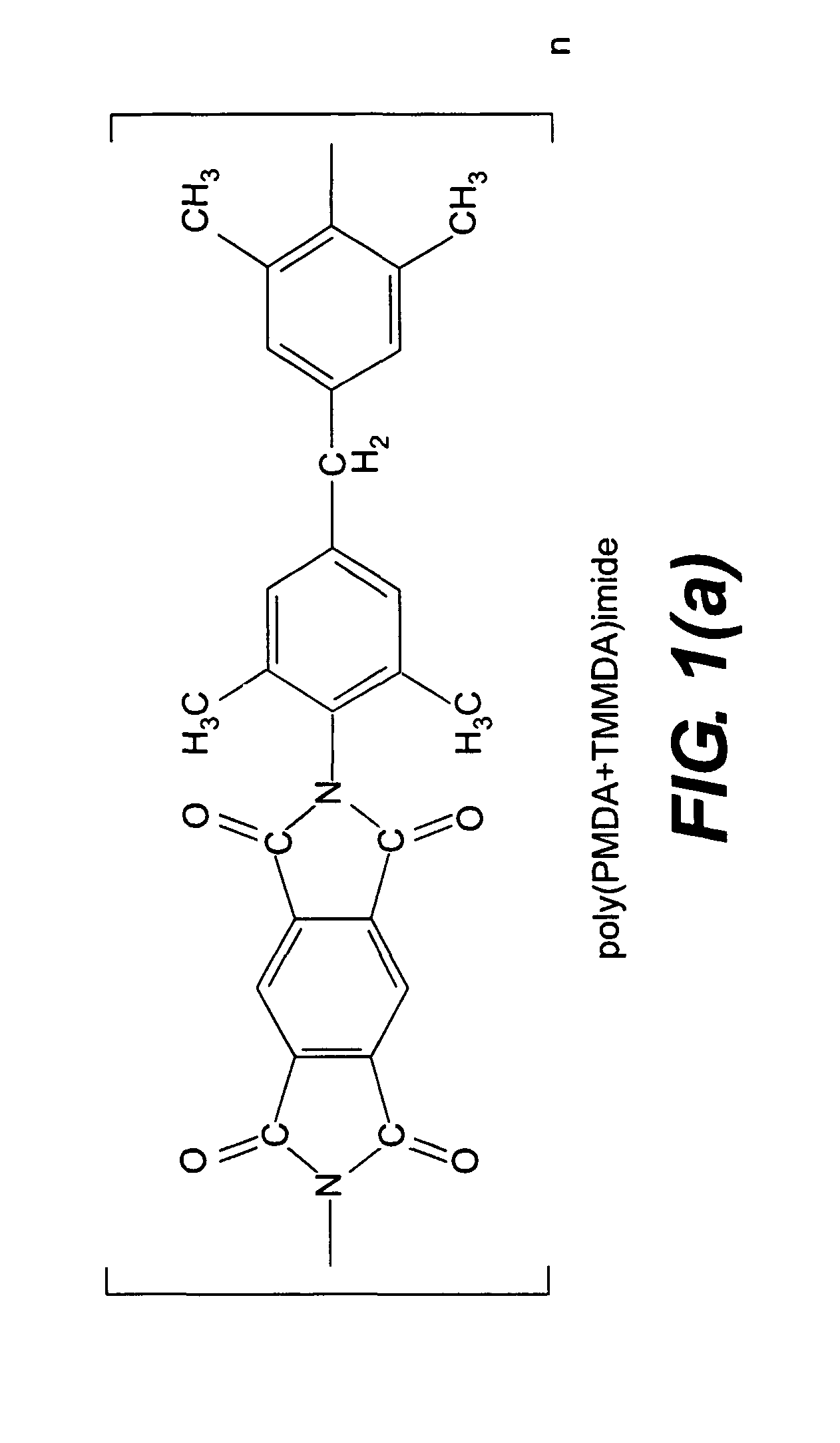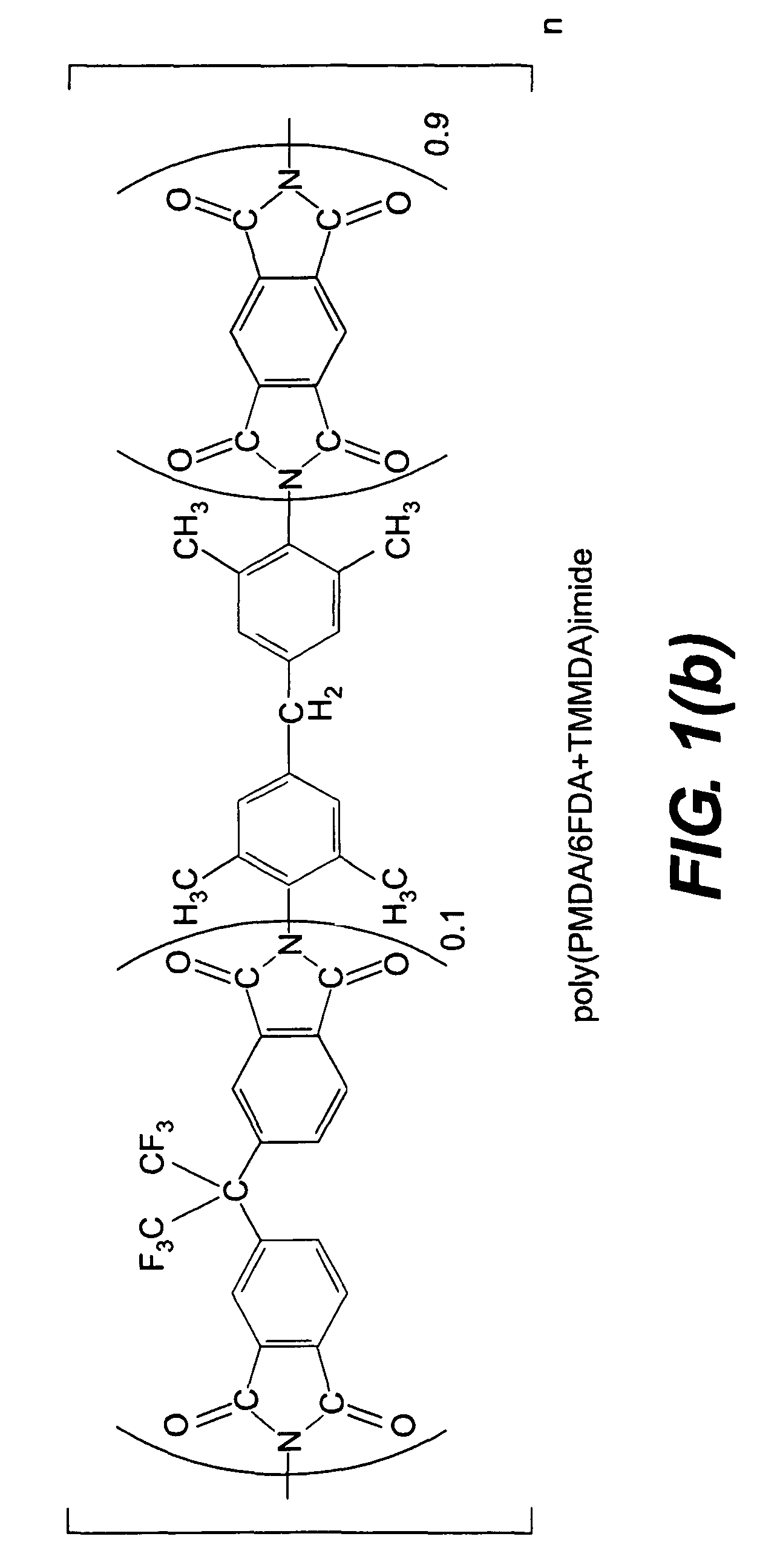Method of forming a card with embedded IC and electrochemical cell
a technology of electrochemical cells and embedded ic, applied in the field of cards, can solve problems such as reducing optical clarity, and achieve the effect of reducing optical clarity and high optical clarity
- Summary
- Abstract
- Description
- Claims
- Application Information
AI Technical Summary
Benefits of technology
Problems solved by technology
Method used
Image
Examples
example 1
Optical Clarity Measurements for Commercially Available Polyimide / Salt / Solvent as Compared to Exemplary PMEs According to the Invention
[0124]The purpose of this example is to demonstrate the homogenous nature of the PME formed from polyimides that have strong interactions with a lithium salt through demonstrated optical transmission. PME films were generated from polyimides shown in FIG. 1(b), (c) and (m), while a Matrimid 5218p / salt / solvent was generated for comparison. The PMEs and Matrimid based film were cast upon a clear polyethylene terephthalate support film from NMP and dried for three hours in a vacuum oven at 120° C. The residual solvent content was approximately 4 wt %. All PME compositions and the Matrimid formulation were 32% polyimide, 64% LiTFSi salt, and the remainder being the small amount of solvent. All measurements were performed using 540 nm light.
[0125]
Film Thickness% TransmissionPolyimide Type(mils)Absorbancefor a 1 mil filmMatrimid 52180.701.903 0.2% FIG. 1(b...
example 2
[0128]Since the PME is a homogeneous or near homogeneous matrix material, batteries formed using the PME exhibit a unique ability to handle exposure to high temperatures and pressures, and still maintain its performance characteristics. Cell assembly is typically performed at elevated temperatures (e.g. 140° C.) and pressure (e.g. 125 psi) for about 10 minutes, so subsequent exposures to similar or less rigorous conditions do not effect cells manufactured according to the invention. Significantly, it has been found that cells according to the invention can withstand conditions significantly more rigorous as compared to the above-referenced cell assembly conditions.
[0129]Typical card manufacturing techniques require hot lamination at 125° C. for 5 or more minutes in an hydraulic press exerting over 250 psi. Batteries according to the invention have demonstrated full function following this process with no significant change in open circuit voltage (OCV) or capacity following typical ...
example 3
[0131]Scanning electron microscope (SEM) micrographs were taken to evaluate the morphology of the PME according to the invention and the interface between the PME and a lithium vanadium oxide (LVO) / polyimide cathode film. FIG. 10(a) shows two (2) SEM micrographs of the PME alone which each evidence a substantially defect free and a porosity free film. The thickness of the PME films shown were both about 75 μm.
[0132]FIG. 10(b) shows a SEM of an interface between a PME film (20 μm) disposed on a lithium vanadium oxide / polyimide cathode layer (55 μm). The lower images are blowups of the interfaces shown at the top of FIG. 10(b). The interfaces shown are quite uniform and smooth.
PUM
| Property | Measurement | Unit |
|---|---|---|
| unit cell voltage | aaaaa | aaaaa |
| unit cell voltage | aaaaa | aaaaa |
| pressure | aaaaa | aaaaa |
Abstract
Description
Claims
Application Information
 Login to View More
Login to View More - R&D
- Intellectual Property
- Life Sciences
- Materials
- Tech Scout
- Unparalleled Data Quality
- Higher Quality Content
- 60% Fewer Hallucinations
Browse by: Latest US Patents, China's latest patents, Technical Efficacy Thesaurus, Application Domain, Technology Topic, Popular Technical Reports.
© 2025 PatSnap. All rights reserved.Legal|Privacy policy|Modern Slavery Act Transparency Statement|Sitemap|About US| Contact US: help@patsnap.com



